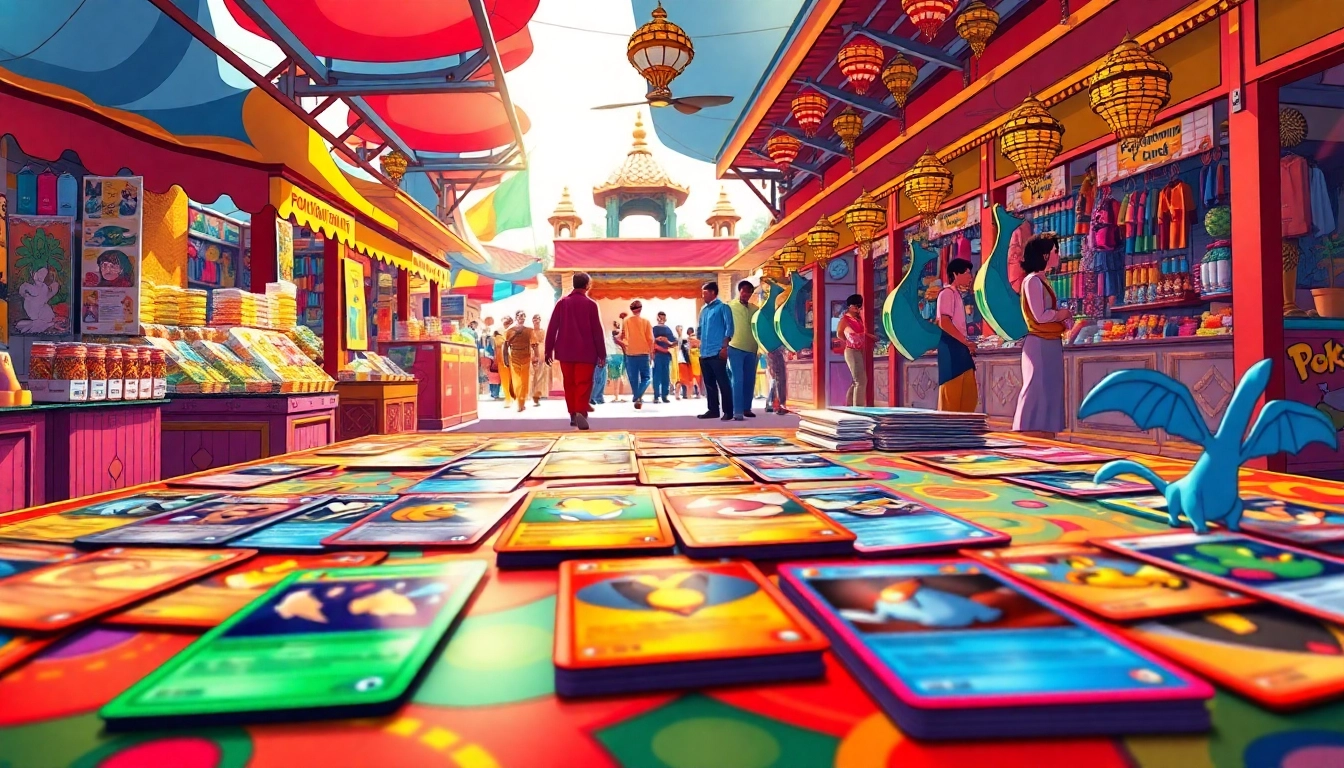Understanding Real Pokemon Cards
In the world of collectible trading cards, especially the vibrant realm of Pokémon, authenticity is paramount. As the popularity of Pokémon cards surges, so does the production of counterfeit copies. For collectors and players alike, it’s crucial to understand what constitutes a real pokemon card. This guide aims to provide insights into the authenticity, buying strategies, and community engagement related to these iconic cards.
What Makes Pokemon Cards Authentic?
Authentic Pokémon cards are made under strict quality control processes by The Pokémon Company. Each card must adhere to specific attributes that define its legitimacy:
- Printing Quality: Genuine cards are printed using high-quality methods that ensure clarity and color accuracy. The text should be sharp and easily readable.
- Card Material: Authentic cards are made of a specific cardstock that has a certain thickness and texture. They have a slight bend but are also resistant to damage.
- Holographic Elements: Many Pokémon cards feature holographic images that shift when viewed from different angles, a feature that is challenging to replicate accurately.
- Edge and Corner Specifications: Authentic cards have precisely rounded corners and uniform spacing along the edges. This is a subtle yet telling sign of authenticity.
Key Features to Identify Genuine Cards
Identifying real Pokémon cards involves looking out for notable features:
- Set Symbols: Each Pokémon card belongs to a specific set, indicated by a unique symbol on the card. Familiarizing yourself with these symbols can aid in identification.
- Ruler Test: Genuine cards have a specific height and width. You can compare the card to a ruler; if it seems off, it could be a fake.
- Light Test: Hold the card up to a strong light source. Authentic cards allow a small amount of light to pass through, revealing a distinct parchment-like quality.
- Ink Test: The ink used on authentic cards has a specific feel and texture. You can gently rub your finger across the card; counterfeit cards often feel too smooth or sticky.
Common Myths About Fake Pokemon Cards
There are many myths surrounding the identification of fake Pokémon cards. Here are a few to clear up misunderstandings:
- Myth 1: All holographic cards are automatically real. Fact: Counterfeiters can replicate the holographic effect, so always examine other attributes.
- Myth 2: Older cards are always valuable. Fact: Value depends on demand and condition, not just age.
- Myth 3: If it comes in a pack, it must be real. Fact: Fakes can be packaged to look legitimate, so always inspect individual cards carefully.
Where to Buy Real Pokemon Cards
For collectors and enthusiasts, knowing where to purchase genuine Pokémon cards is essential. There is a mix of online and local options available that cater to different needs and preferences.
Trusted Online Retailers for Collectors
Several online retailers specialize in selling authentic Pokémon cards. Some of the most reputable include:
- Amazon: Offers a wide selection of new and used cards. Always check seller ratings to ensure you are purchasing from a reliable source.
- eBay: A marketplace where you can find both individuals and stores selling cards. Look for listings with high feedback ratings and clear return policies.
- TCGPlayer: A dedicated platform focusing on trading card games, including Pokémon. This site provides a vast inventory along with pricing guides, which can help you assess the fair market value of cards.
- Pokémon Center: The official store offers a selection of the latest cards, ensuring that you are buying authentic products directly from the source.
Local Stores and Events for Card Hunts
For those who prefer a hands-on approach, local hobby shops and community events often host Pokémon card tournaments and sales:
- Local Game Stores: Many small retailers will carry a selection of Pokémon cards and offer opportunities for trading and playing.
- Convention Events: Attend gaming conventions or card expos to meet other collectors and purchase cards from reputable vendors.
- Swap Meets: These gatherings are ideal opportunities to find both cards and fellow enthusiasts willing to trade.
Assessing Prices: What’s Fair for Authentic Cards?
Understanding pricing is crucial when buying real Pokémon cards. Factors influencing card prices include:
- Rarity: Limited edition or rare cards often cost significantly more than common cards.
- Condition: Cards in mint condition will always command higher prices. Be cautious of graded cards, as grading standards can vary.
- Market Trends: Following trends in the collecting community can help you gauge whether a price is fair or inflated.
Maintaining Your Pokemon Card Collection
Preserving your investment is vital in card collecting. There are specific practices that can help keep your Pokémon cards in the best possible condition.
Best Practices for Storage and Care
Proper storage is essential for maintaining the integrity of your collection. Here are some best practices:
- Card Sleeves: Use protective sleeves to shield cards from wear, dust, and moisture. Look for sleeves made specifically for trading cards.
- Binders vs. Boxes: Binders allow for easy viewing but can introduce wear from handling. Boxes protect cards but may take up more space and make viewing difficult. Choose based on your collection needs.
- Climate Control: Store cards in a stable, cool environment. Avoid direct sunlight and extreme temperatures, which can warp and discolor cards.
How to Protect Against Damage
In addition to proper storage, proactive measures can mitigate damage:
- Avoid Handling: Minimal handling prevents oils and dirt from transferring onto the cards. Wear gloves when dealing with particularly valuable pieces.
- Regular Inspection: Check your collection periodically to ensure no cards have developed visible damage, such as bending or staining.
- Safe Transport: When traveling with cards, ensure they are in a protective case to prevent crushing or accidental bending.
Tools and Supplies for Card Collectors
Several tools can facilitate your card collection management:
- Card Graders: A grading tool can assist in assessing the condition of the cards, especially if you plan to sell or trade them.
- Labeling Supplies: Use labels to indicate the condition, rarity, or price of your cards for easy reference.
- Inventory Management Software: Consider using an app or software to keep track of your collection instilling organization.
Trading and Selling Real Pokemon Cards
With an extensive collection, you may want to trade or sell cards. Understanding the market and safe practices will facilitate these transactions.
Understanding the Market Value of Cards
Like any collectible, understanding a card’s market value is vital before you sell or trade:
- Market Research: Utilize resources such as TCGPlayer or eBay sold listings to gauge what similar cards are selling for.
- Current Demand: Card values can fluctuate based on trends, so being aware of what is in demand can provide better selling opportunities.
- Grading Influence: A card’s grade can dramatically impact its value. Knowing how to evaluate the condition will give you leverage during negotiations.
Where to Find Buyers or Trade Partners
Finding the right market for your cards may require some effort:
- Online Marketplaces: Websites such as TCGPlayer, eBay, and Facebook marketplace allow for easy sales and trades.
- Local Game Shops: Some local retailers buy collections or facilitate trades between players.
- Conventions and Tournaments: Attending events not only allows you to showcase your cards but can lead to finding interested buyers.
Safety Tips for Online Transactions
Engaging in online transactions introduces some risk, so adhere to these safety tips:
- Use Secure Payment Methods: Opt for payment platforms that offer buyer protection like PayPal.
- Trust Ratings: Always check a seller’s feedback rating and read reviews before making purchases. Look out for red flags, such as excessive negative reviews.
- No Rush Decisions: Take your time when considering an offer. Scammers often push for quick action to avoid detection.
Engaging with the Pokemon Card Community
Connecting with like-minded individuals can enhance your experience as a collector and player. Here are some ways to engage with the community:
Participating in Tournaments and Events
Tournaments can be an exciting way to showcase your decks and connect with other collectors. Tips for engaging include:
- Preparation: Bring a well-balanced deck and be prepared for both friendly matches and competitive play.
- Networking: Use tournaments as a way to connect with other collectors—swapping stories, tips, and even cards can create invaluable relationships.
- Stay Updated: Follow community news for upcoming events, set releases, and meta changes to remain well-informed.
Joining Online Forums and Social Media Groups
The internet is brimming with platforms to connect with other Pokémon card enthusiasts:
- Reddit: Subreddits such as r/PokemonTCG offer vibrant discussions about strategies, trades, and card values.
- Facebook Groups: Many dedicated groups allow for trading, selling, and discussions about the latest expansions.
- Discord Servers: Join groups where you can chat with real-time updates from fellow players and collectors.
Sharing Your Collection: Tips for Showcasing
Showcasing your collection can be a rewarding experience. Consider these approaches:
Static Displays: Create static displays for popular showcases; utilizing display cases and lighting can elevate your cards’ presentation.
Social Media: Share images of your prized cards on Instagram or Twitter, tagging relevant communities to garner interest.
Build a Blog: Chronicle your collection journey, offering insights, value assessments, and personal experiences. This can lead to building a following and credibility.



